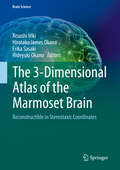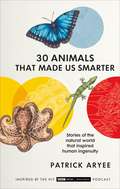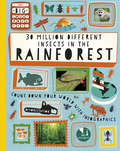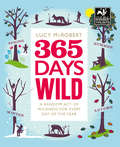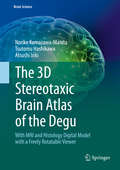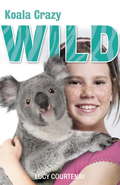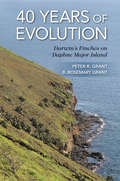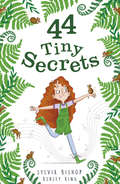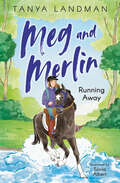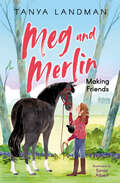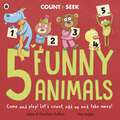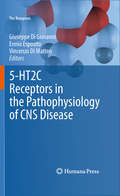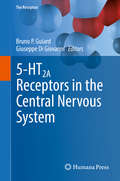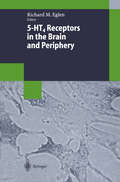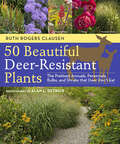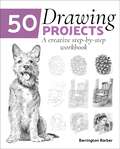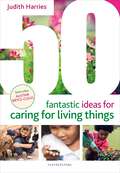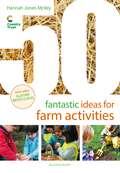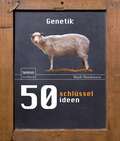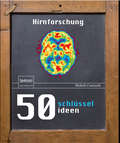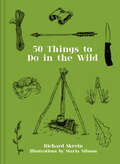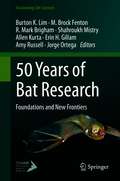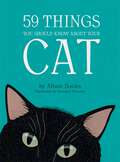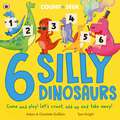- Table View
- List View
The 3-Dimensional Atlas of the Marmoset Brain: Reconstructible In Stereotaxic Coordinates (Brain Science)
by Atsushi Iriki Hirotaka James Okano Erika Sasaki Hideyuki OkanoThis book provides accurate, comprehensive, and convenient reference for usages of the “freely rotatable three dimensional combined Nissl-stained and MRI digital data of the marmoset brain”. The key features of the original 3D digital data and of this atlas are: 1. The original digital datasets are freely rotatable in three dimensions, thus expected to be useful for any disciplines and anatomical interest, using any coordinate system, 2. Combined Nissl stained and MRI images are obtained from the same marmoset, to allow cross-modality matched references for multiple usages, 3. 86 Horizontal Series of Images with Neurosurgical Plane (based on the actual data), with more accuracy and resolution (Chapter 2) than the web-based digital images, 4. 32 Coronal Series of Images with Neurosurgical Plane (reproduced from the brain model) (Chapter 3), 5. 10 Parasagittal Series of Images with Neurosurgical Plane (reproduced from the brain model) (Chapter 4), 6. 3 Omnidirectionally Sliceable Planes (reproduced from the brain model) (Chapter 5), 7. In order to provide higher resolution structures to match systematic accuracy for supplementation of the digital data on the website, additional information are included. They are: 1) Nomenclature, 2) List of Brain Structures in Hierarchical Order, 3) Index of Abbreviations, together with 143 useful Bibliographic References list as of 2016, 8. Horsley-Clarke’s stereotaxic coordinates were adopted in the present atlas.
30 Animals That Made Us Smarter
by Patrick AryeeDid you know that mosquitoes' mouthparts are helping to develop pain-free surgical needles? Who'd have thought that the humble mussel could inspire so many useful things, from plywood production to a 'glue' that cements the crowns on teeth and saves unborn babies in the womb? How about the fact that studying the tiny kingfisher solved engineering problems with Japan's ultra-high-speed bullet train, or that the humpback whale's flipper helped design the most efficient blades for wind power turbines? For many years, humans have been using the natural world as inspiration for everything from fashion to architecture, and medicine to transport, and it may come as a surprise to learn how many inventions have been motivated by animal design and behaviour. Dive into the depths with us as author Patrick Aryee reveals even more astonishing stories about animals' exceptional powers and the unique contributions they've made to the quality of our everyday lives. Beautiful hand-drawn illustrations accompany his revelations and bring the natural world to life.
30 Million Different Insects in the Rainforest (The Big Countdown #2)
by Paul RockettYou can count numbers all around you, from the eight legs on a spider to the one nose on your face. But can you the animal species found in the rainforest or the fish in the River Amazon? Find out all about RAINFOREST in THE BIG COUNTDOWN, including its extraordinary variety of plant and animal life, its tribal people, its layered structure, its role as an oxygen producer and why we need to protect it.The Big Countdown looks at popular topics and investigates the great many numbers that make them fascinating. From the mind-bogglingly large to smallest and most precious, this series helps us understand that it's not just our days that are numbered.
365 Days Wild
by Lucy McRobert365 inspirational suggestions for enjoying nature. These 'Random Acts of Wildness' will encourage you to fall in love with, learn about or even help wildlife and wild places near you.
The 3D Stereotaxic Brain Atlas of the Degu: With MRI and Histology Digital Model with a Freely Rotatable Viewer (Brain Science)
by Noriko Kumazawa-Manita Tsutomu Hashikawa Atsushi IrikiThis book is the first digital atlas of the degu brain with microscopic features simultaneously in Nissl sections and magnetic resonance imaging (MRI). As an experimental animal model, the degu contributes to a variety of medical research fields in diabetes, hyperglycemia, pancreatic function, and adaptation to high altitude, among others. Recently the degu has gained increasing importance in the field of neuroscience, particularly in studies evaluating the relationship between sociality and cognitive brain functions, and in studies pertaining to the evolutional aspects of the acquisition of tool-use abilities. Furthermore, aging-related brain dysfunction in humans can be studied using this animal model in addition to mammals with much longer lifespans. This brain atlas is constructed to provide histological and volume-rendered information simultaneously, fitting with any spatial coordination in brain positioning. It can be a useful guide to degus as well as to other rodents for studies of brain structures conducted using MRI or other contemporary examination methods with volume-rendering functions.
4: Koala Crazy (WILD #4)
by Lucy CourtenayFeaturing tiger cubs, circus bears, swimming monkeys and cute koalas - this is a must-read series for all animal lovers!Twins Tori and Taya Wild disagree about almost everything ... except for their love of animals. Which is good since their mother fosters all kinds of wild animals so their house is always full of them! And now their family has set up an 'animals on film' business their lives have become even WILDER. It was only a matter of time before Tori and Taya had their chance to be on the set of a famous music video when Taya's baby croc is selected to star on a snappy rap video ... And when the twins aren't busy with crocs, it's cute Koco the-kangeroo-loving koala bear who is grabbing their attention. When he goes missing things at Wild World get a bit koala crazy!Check out these other titles in the series: Tiger Trouble, Monkey Magic, Bear Hug
40 Years of Evolution: Darwin's Finches on Daphne Major Island
by Peter R. Grant B. Rosemary GrantRenowned evolutionary biologists Peter and Rosemary Grant have produced landmark studies of the Galápagos finches first made famous by Charles Darwin. In How and Why Species Multiply, they offered a complete evolutionary history of Darwin's finches since their origin almost three million years ago. Now, in their richly illustrated new book, 40 Years of Evolution, the authors turn their attention to events taking place on a contemporary scale. By continuously tracking finch populations over a period of four decades, they uncover the causes and consequences of significant events leading to evolutionary changes in species.The authors used a vast and unparalleled range of ecological, behavioral, and genetic data--including song recordings, DNA analyses, and feeding and breeding behavior--to measure changes in finch populations on the small island of Daphne Major in the Galápagos archipelago. They find that natural selection happens repeatedly, that finches hybridize and exchange genes rarely, and that they compete for scarce food in times of drought, with the remarkable result that the finch populations today differ significantly in average beak size and shape from those of forty years ago. The authors' most spectacular discovery is the initiation and establishment of a new lineage that now behaves as a new species, differing from others in size, song, and other characteristics. The authors emphasize the immeasurable value of continuous long-term studies of natural populations and of critical opportunities for detecting and understanding rare but significant events.By following the fates of finches for several generations, 40 Years of Evolution offers unparalleled insights into ecological and evolutionary changes in natural environments.
40 Years of Evolution: Darwin's Finches on Daphne Major Island (PDF)
by Peter R. Grant B. Rosemary GrantRenowned evolutionary biologists Peter and Rosemary Grant have produced landmark studies of the Galápagos finches first made famous by Charles Darwin. In How and Why Species Multiply, they offered a complete evolutionary history of Darwin's finches since their origin almost three million years ago. Now, in their richly illustrated new book, 40 Years of Evolution, the authors turn their attention to events taking place on a contemporary scale. By continuously tracking finch populations over a period of four decades, they uncover the causes and consequences of significant events leading to evolutionary changes in species.The authors used a vast and unparalleled range of ecological, behavioral, and genetic data--including song recordings, DNA analyses, and feeding and breeding behavior--to measure changes in finch populations on the small island of Daphne Major in the Galápagos archipelago. They find that natural selection happens repeatedly, that finches hybridize and exchange genes rarely, and that they compete for scarce food in times of drought, with the remarkable result that the finch populations today differ significantly in average beak size and shape from those of forty years ago. The authors' most spectacular discovery is the initiation and establishment of a new lineage that now behaves as a new species, differing from others in size, song, and other characteristics. The authors emphasize the immeasurable value of continuous long-term studies of natural populations and of critical opportunities for detecting and understanding rare but significant events.By following the fates of finches for several generations, 40 Years of Evolution offers unparalleled insights into ecological and evolutionary changes in natural environments.
44 Tiny Secrets (44 Tiny Secrets #1)
by Sylvia BishopThe first book in a heartwarming and timeless new series with a brave and spirited heroine, from the acclaimed duo behind THE BOOKSHOP GIRL. Betsy Bow-Linnet is determined to become a world famous concert pianist like her parents. There’s just one problem: no matter how hard she practises she doesn't share their musical talents. So when a mysterious letter arrives from a woman claiming to know of an unusual Method that will make Betsy’s playing ‘stupendous’, Betsy jumps at the chance. There's just one condition: she must keep the Method a secret. But it isn't just one secret – it's forty-four tiny secrets in the shape of a boxful of pygmy mice! Betsy is mystified – how are they going to help her play the piano and – more importantly – how on earth can she keep them all a secret? Gorgeously illustrated in two-colour, this is a warm, funny and pitch-perfect story about the true nature of family love and finding your real talents in the most unexpected of places. Perfect for fans of ISADORA MOON, AMELIA FANG, OTTOLINE and HARPER.
4u2read – Meg and Merlin: Running Away (4u2read)
by Tanya LandmanA ride in the countryside spirals out of control for Meg and Merlin in this dramatic new addition to Tanya Landman’s lovable horse-riding series
4u2read,Meg and Merlin – Meg and Merlin: Making Friends (4u2read,Meg and Merlin)
by Tanya LandmanWhen a pony appears in her garden on Meg’s tenth birthday, it feels like all of her wishes have been answered. But is it all too good to be true? Award-winning author Tanya Landman brings a fresh perspective to horse riding stories with a heart-warming new series of friendship and dreaming big.
5 Funny Animals: a counting and number bonds picture book
by Adam Guillain Charlotte GuillainCount and spot the animals in this fun, rhyming picture book!From racing bears, to bouncing frogs and sailing goats, this counting and number bonds picture book encourages children to learn basic sums through play and interactivity.The perfect maths book for 4 year olds to 6 year olds. With playful characters to spot and bouncy rhyming text to support their early learning in a fun way.
5-HT2C Receptors in the Pathophysiology of CNS Disease (The Receptors #22)
by Giuseppe Di Giovanni, Ennio Esposito and Vincenzo Di MatteoPart of Springer’s “The Receptors,” series, this text is the first ever overview on the research of 5-HT2c receptors. 5-HT2c receptor research has been productive for twenty-five years, but recent years have seen an extraordinary increase in both amount produced and insight gained. 5-HT2c is a prominent central serotonin receptor subtype widely expressed within the central and the peripheral nervous system and is thought to play a key role in the regulation of numerous behaviors. This text covers the molecular, cellular, anatomical, biochemical and behavioral aspects of this receptor, highlighting its distinctive regulatory properties and the emerging functional significance of constitutive activity and RNA-editing in vivo. It also investigates the receptors’ therapeutic potential in many diseases, treated individually in separate chapters, including depression, drug abuse, schizophrenia, eating disorders, Parkinson’s disease, Prader-Willi Syndrome, Alzheimer’s disease and epilepsy.
5-HT2A Receptors in the Central Nervous System (The Receptors #32)
by Bruno P. Guiard Giuseppe Di Giovanni5-HT2A receptors are G-protein coupled receptors that are widely distributed throughout the brain, most notably on neuronal and glial cells. 5-HT2A receptors have been implicated in various central physiological functions including mood regulation, memory, sleep, nociception, eating, and reward behaviors, and they are also believed to control the cardiovascular system. This book provides a comprehensive overview of these receptors including sections on their properties and distribution, approaches for their study, their role in a number of brain functions and diseases, and their role as therapeutic targets.
5-HT4 Receptors in the Brain and Periphery (Biotechnology Intelligence Unit)
by Richard M. EglenThis book provides a comprehensive, up-to-date review of the distribution, pharmacology and physiology of central 5-hydroxytryptamine (5-HT)4 receptors. The 5-HT receptor subtypes exhibit a unique pharmacology, distribution and function, of which the 5-HT4 receptor has been one of the most intensively studied in recent years, both from a basic research standpoint and as a target for novel therapeutics.
50 Beautiful Deer-Resistant Plants: The Prettiest Annuals, Perennials, Bulbs, and Shrubs that Deer Don't Eat
by Ruth Rogers ClausenOffering a wonderful array of potential plant combinations with other deer-resistant varieties, Clausen shows readers how to create a gorgeous garden and still keep deer at bay.
50 Drawing Projects: A Creative Step-by-Step Workbook
by Barrington BarberIn this imaginative new book, Barrington Barber presents an array of interesting subjects, including people, pets and everyday objects in and around the home. Each project is broken down into easy-to-follow steps which culminate in a finished drawing. The reader is then invited to make his or her own version of the subject. Combining guidance for beginners with challenging subjects for more experienced artists, 50 Drawing Projects is a relaxing way to discover and develop one of life's most rewarding creative skills.Subjects include:• Still lifes• Animals• Flowers• People
50 Fantastic Ideas for Caring for Living Things (50 Fantastic Ideas)
by Judith HarriesA brilliant collection of activities for teaching children to care for animals and plants.The ideas in this book will enable children to experience the delights of watching animals and plants grow, sharing and caring for pets, observing a variety of life-cycles, surveying different minibeasts and finding out how to help vulnerable wild animals like hedgehogs. Linked to the Understanding the World section of the EYFS framework, this book includes ideas for games, creative activities, role play and hands-on experiences with animals and plants to build children's empathy and encourage respect for living things, both in their own environments and further afield.With over 40 books in the 50 Fantastic Ideas series there's something for everyone – whether you're a practitioner looking for new ideas or you want to try out a popular well-loved activity with a new twist. Each book offers a wide range of fun and creative activities to carry out with children aged 0–5 years, with lists of resources, step-by-step instructions and information about the benefits for children.
50 Fantastic Ideas for Farm Activities (50 Fantastic Ideas)
by Hannah Jones McVey_______________The 50 Fantastic Ideas series is packed full of fun, original, skills-based activities for Early Years practitioners to use with children aged 0-5. Each activity features step-by-step guidance, a list of resources, and a detailed explanation of the skills children will learn. Creative, simple, and highly effective, this series is a must-have for every Early Years setting._______________A collection of 50 fun and effective activities to help explore and bring to life themes around farming and food production.The ideas in this book will develop a child's confidence, curiosity and connection with the land that sustains them and supports their development within the Early Learning Framework, including new vocabulary, mathematical skills, development of fine motor skills and making healthy food choices. Activities such as 'explore fruit browning,' 'balloon sheep sheering' and 'discover your dinner plate' provide real-life connections to the farm-to-fork journey. The programme, designed by experts from the Country Trust, the UK's leading agricultural education charity, offers a framework through which to explore health, cooking, growing, animals, ethics, care for the environment, nature and much more. The sensory and wide-ranging connections of the farm nurture their relationship with nature and provide benefits for their mental and physical health.50 Fantastic Ideas for Farm Activities can be used to provide inspiration for a farm theme in the classroom, for activities to complement a class growing project, to introduce ways to use food, farming or natural themes to strengthen aspects of the curriculum, or to support a farm visit. This book will show practitioners how to make exploring every aspect of a farm-to-fork journey a fun and foundational part of any setting.
50 Schlüsselideen Genetik
by Marc HendersonEine Entdeckungsreise durch Gene, Genome und Verwandtschaften Ist unsere Persönlichkeit ererbt oder geschaffen? Was verrät die Erbsubstanz DNA über die Geschichte des Menschen? Welche Bedeutung hat das Klonschaf Dolly? Und werden wir schon bald Designerbabys nach Wunsch bestellen? In 50 klaren und unterhaltsamen Essays destilliert Mark Henderson, Wissenschaftsredakteur der Times, die zentralen Konzepte der noch jungen Wissenschaft Genetik heraus. Indem er den Bogen von Darwins Theorie der Evolution und Mendels Kreuzungsexperimenten bis zu den jüngsten, oft kontroversen, wissenschaftlichen Fortschritten dieser Disziplin schlägt, zeigt er auf, wie sehr die Kenntnis der genetischen Maschinerie unser Verständnis vom Leben auf der Erde verändert hat. Voller Beispiele aus dem Alltag, erhellender Zitate und anschaulicher grafischer Darstellungen entfaltet 50 Schlüsselideen Genetik ein breites Panorama. Das Buch vermittelt ein Bild von der Entstehung und Entwicklung des Lebens, indem es zunächst die Geheimnisse der Chromosomen und der DNA wie auch des menschlichen Genoms aufdeckt erläutert, wie durch die Wechselwirkung von Erbe und Umwelt unsere Persönlichkeit geformt wird offenbart, wie die Genetik uns beim Kampf gegen Krebs, AIDS, Malaria und resistente Keime helfen kann erkundet die weitreichenden ethischen Fragen um so kontroverse Themen wie Stammzellforschung, Klonen und die Möglichkeit künstlichen Lebens erhellt die jüngsten Erkenntnisse zu DNA-Schrott, Evo Devo und Epigenetik und wagt einen Blick in die Zukunft der menschlichen Rasse Leicht verständlich, informativ und absolut faszinierend, liefert das Buch nicht nur einen aktuellen Überblick über diesen bedeutsamen Wissenschaftszweig, sondern lässt auch erkennen, was jeden von uns so einzigartig macht. Die Evolutionstheorie Die Vererbungsgesetze Gene und Chromosomen Die Genetik der Evolution Mutationen Sex Gene, Proteine und DNA Die Doppelhelix Entschlüsselung des genetischen Codes Genmanipulation Das Lesen des Genoms Das menschliche Genom Lektionen des Genoms Genetischer Determinismus Egoistische Gene Das unbeschriebene Blatt Erbe und Umwelt Erbkrankheiten Die Jagd nach den Genen Krebs Superkeime Verhaltensgenetik Intelligenz Rasse Genetische Urgeschichte Genetische Stammbaumforschung Geschlechtsspezifische Gene Das Ende der Männer? Der Kampf der Geschlechter Homosexualität Genetische Fingerabdrücke Transgene Pflanzen Transgene Tiere Evo Devo Stammzellen Klonen Menschen klonen Gentherapie Gentests Maßgeschneiderte Medikamente Designerbabys Schöne neue Welten Gene und Versicherungen Patentierung von Genen Junk-DNA Kopienzahlvarianten Epigenetik Die RNA-Revolution Künstliches Leben Die Illusion der Normalität
50 Schlüsselideen Hirnforschung
by Moheb CostandiEine Entdeckungsreise in die Welt der Nervenzellen und Synapsen, der Gedanken und GefühleDas Nervensystem Die Neuronenlehre Gliazellen Der Nervenimpuls Synaptische Übertragung Sensorische Wahrnehmung Bewegung Topografische Kartierung Spezialisierte Hirnregionen Asymmetrie des Gehirns Spiegelneurone Das Konnektom Verkörperte Kognition Körperbewusstsein Der freie Wille Geschlechtsunterschiede Persönlichkeit Hirngeschädigte Patienten Das Theater des Bewusstseins Bewusstseinsstörungen Aufmerksamkeit Arbeitsgedächtnis Lernen und Gedächtnis Mentale ZeitreisenGedächtnis(re)konsolidierung Entscheidungsfindung Belohnung und Motivation Sprachverarbeitung Exekutive Funktionen Zellwanderung und axonale Wegfindung Zelltod Synaptisches Pruning Neuroplastizität Adoleszenz Stress und Gehirn Das alternde Gehirn Neurodegeneration Adulte Neurogenese Epigenetik Default Mode Network Hirnwellenoszillationen Vorhersagefehler Neuronale Stammzellen Hirnstimulation Kognitive Verstärkung Hirnscan-Verfahren Gedanken entschlüsseln Hirn-Computer-Schnittstellen Neurowissenschaften und das Gesetz Neuroethik _____ Mit seinen unglaublichen 100 Milliarden Nervenzellen, die Informationen in Sekundenbruchteilen weiterleiten, ist das menschliche Gehirn das einflussreichste und zugleich rätselhafteste unserer Organe. Zwar wird es schon seit Jahrzehnten erforscht und experimentell untersucht, doch erst vor relativ kurzer Zeit gewann man Erkenntnisse über seine komplexen inneren Abläufe und darüber, wie es unsere Gedanken, Handlungen und Erinnerungen, ja sogar unsere Selbstwahrnehmung steuert.Auf seiner faszinierenden Erkundungsreise durch das Gehirn widmet sich der Neurobiologe Moheb Costandi sowohl dessen biologischen Funktionen als auch seinem Einfluss auf unser Verhalten. In 50 kompakten, verständlich geschriebenen Kapiteln berichtet er von spannenden neuen Erkenntnissen auf dem Gebiet der Neurowissenschaften. Sind männliche und weibliche Gehirne wirklich unterschiedlich? Haben Emotionen eine biologische Grundlage? Werden wir jemals Gedanken lesen können? Und können die Erfahrungen, die wir machen, unser Gehirn physisch verändern? Von der Entwicklung des Gehirns während des Wachstums und im Alter bis zu den Bausteinen des Bewusstseins, von Geisteskrankheiten wie Demenz und Schizophrenie bis zu der Frage, wie sich Nervengewebe in Reaktion auf Traumata anpassen und neu konfigurieren kann – dieses Buch bietet eine umfassende Einführung in die aufregende Wissenschaft vom menschlichen Gehirn.
50 Years of Bat Research: Foundations and New Frontiers (Fascinating Life Sciences)
by Burton K. Lim M. Brock Fenton R. Mark Brigham Shahroukh Mistry Allen Kurta Erin H. Gillam Amy Russell Jorge OrtegaWith more than 1,400 species, bats are an incredibly diverse and successful group of mammals that can serve as model systems for many unique evolutionary adaptations. Flight has allowed them to master the sky, while echolocation enables them to navigate in the dark. Being small, secretive, nocturnal creatures has made bats a challenge to study, but over the past 50 years, innovative research has made it possible to dispel some of the mystery and myth surrounding them to give us a better understanding of the role these animals play in the ecosystem. The structure of the book is based on several broad themes across the biological sciences, including the evolution of bats, their ecology and behavior, and conservation of biodiversity. Within these themes are more specific topics on important aspects of bat research, such as morphology, molecular biology, echolocation, taxonomy, systematics, threats to bats, social structure, reproduction, movements, and feeding strategies. Given its scope, the book will appeal to the wider scientific community, environmental organizations, and government policymakers who are interested in the interdisciplinary aspects of biology and nature.
59 Things You Should Know About Your Cat
by Alison DaviesWith beautiful, bright gouache illustrations and little-known facts about our most mysterious feline companions, this is the perfect gift for all dedicated cat owners.Often a confusing mixture of affectionate and aloof, one minute seeming completely disinterested in you and the next, following you around the house, how much do you really know about your cat? For example, we may think of them as discerning and fussy eaters, did you know that they have very few taste buds and no sweet tooth at all? Or that, like their owners, cats can be either left or right pawed? And, despite their reserved and dignified demeanour, they love nothing more than one of your smelly socks.
6 Silly Dinosaurs: a counting and number bonds picture book
by Adam Guillain Charlotte GuillainIt's time for count and seek - would you like to come and play?Let's count up all the dinosaurs and see who's here today!Count and spot the silly dinosaurs in this madcap, rhyming picture book. From T. rex magicians to dancing Diplodocus, this hilarious picture book encourages children to learn basic sums through play and interactivity.As well as basic counting and sums, this book introduces children to numbers bond and fact friends for the number 6.With playful characters to spot and bouncy rhyming text, this engaging picture book is perfect for sharing with a child to support their learning in a fun way.
